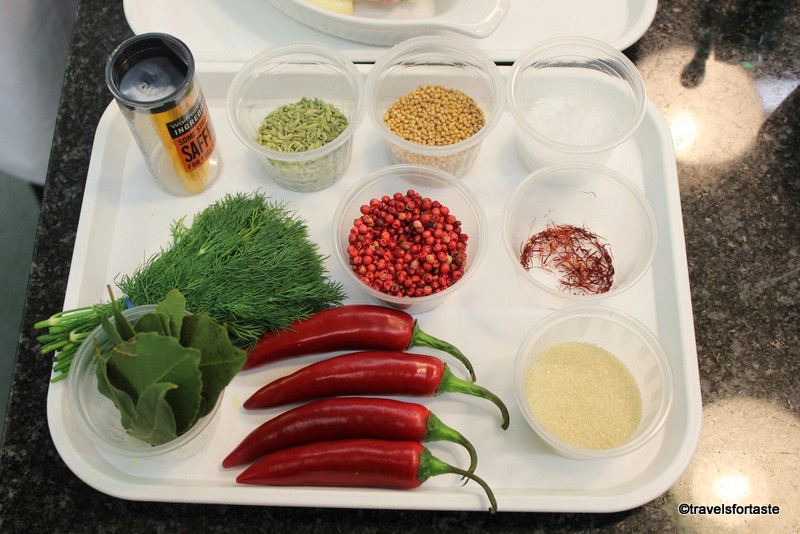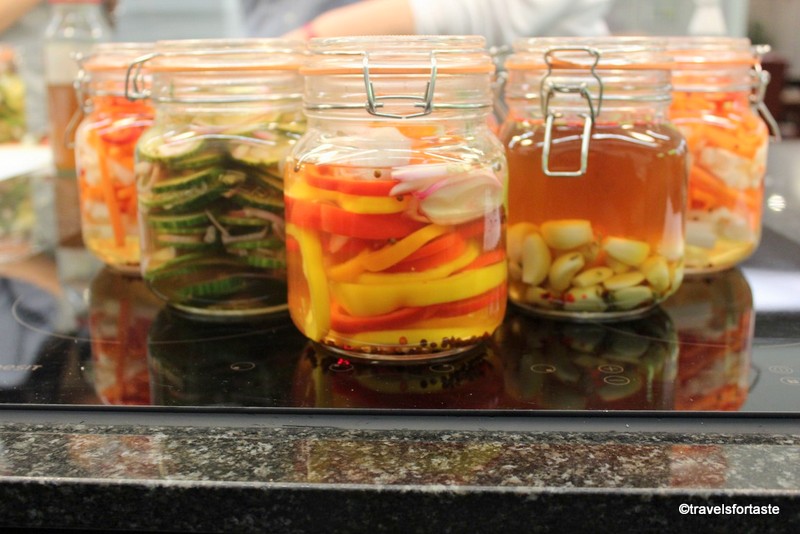When life gives you lemons, make a jar of – yes you guessed right – Lemon Pickle! No proper Indian meal is complete without a bit of pickle on the side. Growing up my mum pickled every possible vegetable and fruit that she would get her hands on , whatever was seasonal and also many times what took her fancy. That is why I was curious to experience how pickles are made using Sarsons vinegar, which now I know is a a very different and easy way to create great tasting pickles.
I cannot resist a good mango or lemon pickle – both of which are firm favourites in our family. But pickled chillies, garlic and even fish come a close second and third. As a preservation technique pickling is almost 4000 years old and am proud to say it started in India with cucumbers.
U.K’s leading vinegar brand has launched a new speciality blend this year and I spent a happy evening pickling bright coloured peppers . The condiments which lend any pickle their distinctive flavour are already a part of these unique Sarson Vinegar and are a must try for anyone who is remotely interested in making pickles. Not only do Sarsons speciality vinegars have the added benefit of coriander seeds, black peppercorns and pink peppercorns, they also help extend the life of your pickles. For recipe inspiration, hints and tips have a browse through the Sarsons website.
The beauty of this process of pickling is that all you need to do is chop what vegetable you would like to pickle and add in the beautiful speciality blend. Ensuring that the Kilner jars used are sterilised properly to prevent any illness and also ensuring that only the most fresh produce is used at all times.
At the event, Denise Tollyfield was at hand to provide her top tips and guide us through the process of making pickles. My friends Nayna and Heidi bottled cucumber while Vaishali and me worked on the peppers. Must say we were quite the team.
Denise recommends boiling the lids of the Kilner Jars separately as they have a rubber ring to ensure the jar shuts tight and prevents leakage – this shouldn’t be oven dried whereas the jars should be sterilised in a pre-heated oven for at least ten minutes. The most important tip she shared is that when pouring the prepared pickle into the sterilised jar – both the glass jar and the pickled mixture should be equally hot. Before sealing the filled jars its best to add enough vingear to cover all the vegetables in the pickle.
I was quite tempted to amp up the heat in our pickled peppers so we added a naughty red chilli sliced into or jars. The garlic pickle looked so good that I was really craving to try some but alas, once the jars were sealed we would have to wait for a a few hours to allow the flavours to mature before enjoying the fruits of our labour. Just remember to label and date each pickle and store them in a cool and ideally dark place,
No better way to spend a chilly winter evening than with friends like Nayna and Heidi doing something we love, working with food and even better when it turns into a chance meeting with another passionate foodie like Vaishali.
There is a definite joy in working with the best possible ingredients especially fresh produce as it guarantees great results each time. I cannot wait to create more fun pickles and add mini jars to share with my friends and family in their Diwali and Christmas gift Hampers.
Disclaimer: With thanks to Sarsons for the invite. As always, all opinions expressed are my own. I was not required to write a positive review and was not compensated monetarily for this post.










Leave a Reply